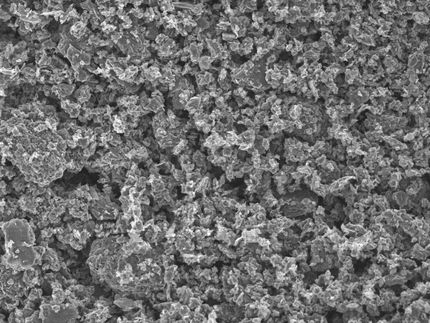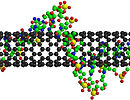Scientists capture secret dance of electrons that causes them to change form
Advertisement
Scientists have captured the first images of electrons that appear to take on extraordinary mass under certain extreme conditions, thus solving a 25-year mystery about how electrons behave in metals. The discovery could help with the design of new materials for high-temperature superconductors.
The findings by scientists from McMaster University, Cornell University, the U.S. Department of Energy's Brookhaven and Los Alamos National Laboratories, are published in the current issue of Nature.
"When electrons interact in materials unpredictable things can happen," says Graeme Luke, professor in the Department of Physics & Astronomy at McMaster University. "Heavy fermion behavior—where electrons behave as if they weigh 1,000 times or more their actual mass—is one of the most fascinating examples of these phenomena. In this case, they were doing a kind of wave-like dance that changes the form and very nature of the electrons."
Using properties in a crystal composed of uranium, ruthenium and silicon— synthesized by doctoral candidate Travis Williams and staff member Jim Garrett in Luke's group using the facilities of the Centre for Crystal Growth at McMaster's Brockhouse Institute for Materials Research — the effects of heavy fermions began to appear as the material was cooled below 55 Kelvin (-218 °C). But an even more unusual electronic phase transition occurred below 17.5K.
Using a technique developed specifically for their experiment known as spectroscopic imaging scanning tunneling microscopy (SI-STM), the team was able to track the arrangement and interactions of electrons in the crystals, and watch how they react at different temperatures and see what happens when they passed through the mysterious phase transition.
"For 25 years we have known that there's a phase transition occurring in this material but we've never been able to identify what kind of order was occurring. It wasn't magnetic order or superconductivity," says Luke. "We didn't know if it was related to the way electrons were behaving in a group or whether it was the result of interactions between individual electrons and uranium atoms. The microscope, however, allowed us to actually see a change in the microscopic electron states."
"Imagine flying over a body of water where standing waves are moving up and down, but not propagating toward the shore," said study leader Séamus Davis, a physicist at Brookhaven and the J.D. White Distinguished Professor of Physical Sciences at Cornell University. "When you pass over high points, you can touch the water; over low points, you can't. This is similar to what our microscope does. It images how many electrons can jump to the tip of our probe at every point on the surface."
Based on these wavelength and energy measurements, scientists can calculate the effective electron mass for specific electron bands.
The researchers are continuing to probe a variety of related compounds with this new approach to further their understanding of heavy fermion systems.



































































